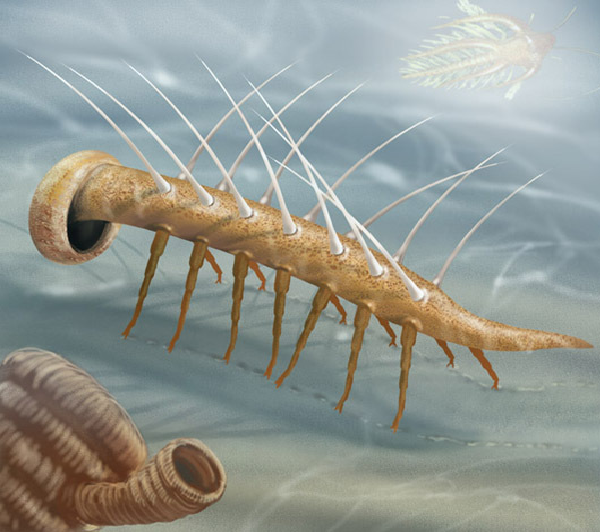Weird, 500 Million Year-Old Worm Provides Valuable Evolutionary Clues
| Paula Marie Navarra | | Aug 18, 2014 08:14 PM EDT |
The Hallucigenia, a worm-like creature with legs, spikes, head and tail, is now considered an important link with modern velvet worms.
This finding also gives scientists important clues as to how different animal groups evolved into their modern bodies.
Scientist said they found out Hallucigenia claws' revealed an organization similar to those in modern velvet worms. Hallucigenia have layers of cuticle stacked one inside the other.
Like Us on Facebook
The jaws of velvet worms also have the same cuticle they now use for chewing there food, researchers added.
Martin Smith, one of the researchers, said it's often thought that modern animal groups formed during the Cambrian Explosion.
He believes that determining in-between fossils like Hallucigenia can help scientists figure out how different animal groups evolved into their modern-day forms.
Javier Hernandez, one of the researchers, said this helps them understand the evolutionary tree of arthropods like spiders, insects and crustaceans.
He said that most gene-based studies suggest arthropods and velvet worms are closely related to each other.
Researchers found out that arthropods are actually closer to tardigrades, a group of hardy microscopic animals best known for its ability to survive sub-zero temperatures.
Hallucigenia has been called an evolutionary misfit and baffled scientist on its connection with modern animal groups.
These legged worms, collectively known as lobopodians, were discovered in the 1970s. It lived approximately 505 million years ago during the Cambrian Explosion.
Originally, the spine found in the worm's back was originally thought to be legs, while its legs were thought to be tentacles. Its head was mistaken for its tail, scientist explained.
This fossil was found in the Burgess Shale in Canada's Rocky Mountains, one of the richest Cambrian fossil deposits in the world.
This worm like creature had row of rigid spines found along its back and seven or eight pairs of legs ending in claw.
They can grow from five millimeters to 35 millimeters in length and lived on the ocean floor during the Cambrian period, scientists said.
©2015 Chinatopix All rights reserved. Do not reproduce without permission
EDITOR'S PICKS
-

Did the Trump administration just announce plans for a trade war with ‘hostile’ China and Russia?
-

US Senate passes Taiwan travel bill slammed by China
-

As Yan Sihong’s family grieves, here are other Chinese students who went missing abroad. Some have never been found
-

Beijing blasts Western critics who ‘smear China’ with the term sharp power
-

China Envoy Seeks to Defuse Tensions With U.S. as a Trade War Brews
-

Singapore's Deputy PM Provides Bitcoin Vote of Confidence Amid China's Blanket Bans
-

China warns investors over risks in overseas virtual currency trading
-

Chinese government most trustworthy: survey
-

Kashima Antlers On Course For Back-To-Back Titles
MOST POPULAR
LATEST NEWS
Zhou Yongkang: China's Former Security Chief Sentenced to Life in Prison

China's former Chief of the Ministry of Public Security, Zhou Yongkang, has been given a life sentence after he was found guilty of abusing his office, bribery and deliberately ... Full Article
TRENDING STORY

China Pork Prices Expected to Stabilize As The Supplies Recover

Elephone P9000 Smartphone is now on Sale on Amazon India

There's a Big Chance Cliffhangers Won't Still Be Resolved When Grey's Anatomy Season 13 Returns

Supreme Court Ruled on Samsung vs Apple Dispute for Patent Infringement

Microsoft Surface Pro 5 Rumors and Release Date: What is the Latest?










